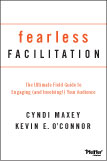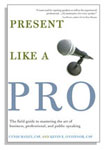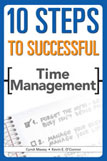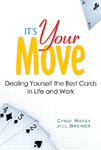Articles
The Gift of Garden Tomatoes
November 05, 2017
by Cyndi Maxey
0 Comment

The Gift of Garden Tomatoes
A recent residential move prompted the glorious volunteerism of a small but select crew of neighbors and friends. Anyone who has hired a professional mover knows that friends are welcomed – even crucial – for transporting the “fragile” items (Grandma’s ancient crystal) or the “hand carries” (mostly lamps) as Roy, my professional mover, appointed them.
In the transport process there is the banter, the catching up, the “You’re giving THAT away?” conversations that are required of the event and most definitely of old friends. “Where are the headboard screws?” “We can’t find the shower curtain liner.” These quandaries are expected.
Also expected was the gift of homegrown garden tomatoes from my friend Jane. She and her husband Tom have a hazelnut farm and glorious gardens downstate and she told me she would bring some. She arrived with a bounty of not one but five different types of garden tomatoes – of all sizes and colors. Not to be outdone, my urban gardening friend and neighbor Mary (multiple huge pots on her rooftop for years and years) arrived with a cup of the sweetest red cherry tomatoes you will ever taste.
What I did not expect was how the tomatoes buoyed my spirits after everyone left that day. The first sign of life in my new home, they were artfully arranged in a white mesh container – a container (selected by my moving helpers) that had never previously held tomatoes – which made the whole effect more special.
Those tomatoes became my food staple the first hectic week in my new home: tomato sandwiches, caprice salad, bite-sized snacks – and more – not to mention the other donations of beans, zucchini, pizza, crackers, cheese, and furniture placement advice – all of which were consumed.
You never know how meaningful the simplest gifts may be. If you ask me to help you move or just rake your yard this fall, I am bringing home grown tomatoes (the farmer’s market will have to do) but my own basil plant is really looking great this year. Something unexpected.
Eight Tips to Have More Fun at your High School Reunion
 It’s summer and traditionally the time for reunions of all kinds – some more tolerable than others. Perhaps none fills the average person with more trepidation than the high school reunion. I mean who wants to see these people every ten years, right? May I suggest, however, that life is short and when you get your Evite, Facebook notice, email, or mailbox invitation, RSVP “yes.” Chances are very good that you won’t regret it. Follow these tips and have more fun!
It’s summer and traditionally the time for reunions of all kinds – some more tolerable than others. Perhaps none fills the average person with more trepidation than the high school reunion. I mean who wants to see these people every ten years, right? May I suggest, however, that life is short and when you get your Evite, Facebook notice, email, or mailbox invitation, RSVP “yes.” Chances are very good that you won’t regret it. Follow these tips and have more fun!
1. Wear the obligatory name tag; print it LARGE, especially your first name.
Do not worry about being nerdy; it just makes it easier for people.
Result: You will have a good reason to approach people and therefore more fun.
2. Tell everyone how great they look – no matter what.
There is ALWAYS something truthful and nice to say:
Ah, Jimmy…the same smile I remember!
Your hair is so trendy.
I love your shoes.
Are you slimming down?
OMG, I have that same necklace. I love it.
You look so distinguished with the beard and mustache.
Result: You will cause the other to be happy and that is fun.
3. Go right to the memories –the ultimate equalizer.
Avoid the children, grandchildren and third husbands.
Take the conversation quickly to Ms. Herzog’s Geometry class.
Result: You will laugh a lot and that is lots and lots of fun.
4. Don’t overindulge in the food; it’s usually bad anyway.
It’s hard to look distinguished with a loaded plate.
Stay with the finger food if possible.
Result: You can shake more hands and hug more and that is more fun.
5. Keep open posture in conversation groups.
That means let the other guy in.
You are grown up now and don’t need the “clique.”
Result: You will make it more fun for others and that is fun.
6. Don’t overindulge in alcohol.
I know, I know this is tough at the high school reunion.
But you are mature and confident now and don’t need to.
Result: You will actually remember whom you talked with and that is more fun.
7. Don’t take selfies.
They never look good; trust me on this.
Recruit a friend to photograph you – a good friend.
Be sure you are with some sort of group of people in the shot.
Result: Instead of looking really bad in the photos, you will just look happy and like you are having fun.
8. Double thank the volunteer organizer.
Would you want to do this?
As you leave be sure to let him or her know.
Result: at least the organizer will remember you – and that is kind of fun.
©2016 Cyndi Maxey All rights reserved.
Leader of the Band: A Lesson in Team Spirit
 On a dreary March Sunday an email notice reminded me: “Great seats still Remain†for a playoff game that same day for an excellent local college’s women’s basketball team. When it’s March in Chicago, you say “yes.”
On a dreary March Sunday an email notice reminded me: “Great seats still Remain†for a playoff game that same day for an excellent local college’s women’s basketball team. When it’s March in Chicago, you say “yes.”
The “great seats still remaining†turned out to be in the STUDENT section of the 3,000- seat auditorium – lodged between two rows of 30 cheerleaders and about as many pep band members – largely brass and percussion.
The game was fast and entertaining. As expected, the young female athletes played well – delighting the sold-out house with a healthy lead.
Due to my unique seating vantage point, it was during the “time-out’s†and the period breaks, when both the pep band and the 30 cheerleaders kicked in with full energy, that I was even more entertained. The cheerleaders, as expected, personified youthful energy, clear skin, perfectly fitting uniforms and headbands and ever-present smiles. And they were good!
The pep band, largely male, while in uniform, was a bit more “scrappy†– displaying a variety of looks, haircuts, body builds, and complexions. And they also were good! Seated so closely to them, I could tell that they were really having FUN – with each other and with the crowd. They were fully present in their role – even though their role was clearly in the background of the action.
At one point I noticed the bandleader. He was a young man – with clean-cut short hair, a suit and tie, and a wonderful constant smile and twinkle in his eye. He was down front directing tempo and stops and starts – always with this smile and a twinkle in his eye – not unlike Harold Hill in The Music Man. He sang along; he mouthed the words; he was in tune with the action on the court; he gave frequent “thumbs up’s†to his band. Unfortunately the family and faculty crowd across the court in the “good seats” could not see this.
I wanted them to be able to see as I could! I wanted them to know that this young bandleader was with his team the entire time – contributing to our experience of the event. As the game ended, and I stood to leave, I noticed that he left his post and walked up and down the bleachers to give a “thumbs up†and an “Atta boy/girl†to every single row and musician. They beamed. They retorted. They laughed. They were totally comfortable with him.
It was a lesson in how a leader motivates a team even though they are not the stars. Thanks to a dreary March day and the leader of the band.
He earned his love through discipline, a thund’ring, velvet hand
His gentle means of sculpting souls took me years to understand
…From Leader of the Band (1981 release) by fellow Peorian Dan Fogelberg
A Single Word
 Is it possible to live a word for a year? Not a phrase or a verse or a quotation – but a word. This is the challenge I put forth to you today. For many, the year end is a summary, an accounting, a tabulation of achievements and trials alike. As the New Year approaches many of us breathe a sigh of relief for the calendar-designed opportunity to consider new beginnings. Some make resolutions. Some have reservations. Some consider nothing.
Is it possible to live a word for a year? Not a phrase or a verse or a quotation – but a word. This is the challenge I put forth to you today. For many, the year end is a summary, an accounting, a tabulation of achievements and trials alike. As the New Year approaches many of us breathe a sigh of relief for the calendar-designed opportunity to consider new beginnings. Some make resolutions. Some have reservations. Some consider nothing.
But the select few – the creatively self-motivated like you and me – select a single word to live by in the year ahead. It’s an intriguing exercise – one that takes some time to ponder. What will my word be for 2016? I’m considering initiative and happiness at the moment. I wonder if these are too mundane. And then I ask myself, “Who cares?’ The thing is…I need a word I can live EVERY DAY and feel very, very good about it. It will carry me through any troubling, confusing, or reflective time. It will be my personal unspoken philosophy to guide my path.
It would be easy here to begin listing many words for you and me to consider. But I won’t do that because you will find your word your own way. When you do, I hope you will be pleased with yourself and enjoy a meaningful NEW YEAR – guided by the light of your single word.
P.S. Thank you…
…to my Millennial daughter and her NYC friends who on a Sunday car trip returning to Brooklyn from hiking Bear Mountain (see photo) solidified together the excellence of this idea. I bestow a special thanks to Brooke who authored the idea, having lived the word authenticity in 2015. And then shared her idea on the long car trip home to Brooklyn. Evidently, the word worked.
PORCH STORY
This August there’s a new home going up across the street – a perfectly sided and roofed urban mansion with no front porch.
Five years ago Rory’s house stood in its place – an aging turn of the century foursquare with several green wooden Irish shamrocks permanently affixed to the front. It was a hot, hot August that year and often Rory sat on the front steps with his also  aging Dad.
aging Dad.
New to the neighborhood, I simply waved “Hello!†to these two from across the street; neighbors told me that their large Irish family had inhabited the home for decades; they were the remaining two.
I was immersed in moving in and getting used to my new home. One of the 90+ degree-days, I was gathering some garden tools from the latticed storage area under the back porch when, “Click, †the door to the under-the-porch area shut and latched closed on the outside. Reaching through the lattice to open it, I soon found that I couldn’t reach the latch from the inside, even with a garden tool.
What to do? It was so hot. I began to yell. At first I just yelled, “Help! Help!†It was embarrassing but I had to try. Then I yelled “Help, Neighbor Help!†“Help, Neighbor, help! “ a little louder. I was getting more distressed when suddenly I heard a male voice, “Where are you?â€
“Back here under the porch!†I said.
Then I was looking through the lattice at khaki pants, immediately hearing the latch unlock and a nice looking guy in his 40’s rather shyly explaining, “I live across the street. We were sitting on the porch and I heard you call Help.â€
“Thank you, thank you. I’m getting used to things here and the latch locked so quickly…and your name?â€
“Rory. I live across the street.â€
“Thank you so much Rory for helping me.â€
“No problem†he said and rejoined his Dad on the steps. He said their air conditioning wasn’t working that day.
Later I learned Rory worked as a bar back and short order cook at a nearby tavern. I often waved to him as he walked to his job.
Five years have passed quickly, and sadly, both Rory and his father have passed away. Their old house was torn down and the new mansion is moving in. I wonder if this is progress.
I have a theory very simply called, “Ya never know.†This is an all-encompassing philosophy that any one person or situation may affect us positively in the future – though we are not aware of the potential at the time. This is why we should greet, respond, help and notice others we come across in life. We should be slow to judge and quick to understand. We should appreciate before we assume.
I miss the shamrocks.
How the Fearless Facilitator Handles the Unexpected, Unleashed, and Unmotivated
 My mature Labrador Retriever, Max, likes to sit on the front porch and watch and sniff passers by. Normally this is quite a staid activity characterized by ear wags, nose action, head tilts, and now and then a tail thump. But occasionally something unexpected happens – like the time a cat went by and Max took off after it into the street putting himself in danger and causing fear in his owner – me! If I had been observing more closely this would not have happened. I just wasn’t expecting it!
My mature Labrador Retriever, Max, likes to sit on the front porch and watch and sniff passers by. Normally this is quite a staid activity characterized by ear wags, nose action, head tilts, and now and then a tail thump. But occasionally something unexpected happens – like the time a cat went by and Max took off after it into the street putting himself in danger and causing fear in his owner – me! If I had been observing more closely this would not have happened. I just wasn’t expecting it!
For those of us in charge of leading meetings of all kinds (training, teambuilding, department, Board), unexpected behavior can cause the meeting to run amuck and us to look less than professional. This is not the time to criticize, to hunt down, and to cause further angst and disruption. Instead it is the time to observe, ask, clarify, and move forward.
The Fearless Facilitator knows what to do:
The unexpected (growler)
Often a meeting is going along quite smoothly when someone makes an unexpected comment. For example, the normally agreeable team member argues a long-held belief, or the typically prepared supervisor has outdated data. Or the enthusiastic marketer takes credit for another’s idea.
Fearless Facilitator: “Megan, if I’ve got this right, your concern is the turn-around time. Is that correct? How have things changed since your initial support of the idea?†OR “ Joe, if I’ve heard your report correctly, the data ends with winter quarter. Do you have the spring results?†OR “ Bob, I hear you; you’re building on Frank’s idea, right?â€
The unleashed (barker)
We all have trigger points that unveil our values; for example, innovation, loyalty, honesty, hard work, or fun. If a meeting’s direction undercuts a core value, we tend to get emotional when we should be business-like.
Fearless Facilitator: “You feel strongly about this issue. What are you specifically referring to?†The idea is to acknowledge the feeling first, then get to specifics about the facts. Sometimes this must go off-line, as in, “ Yes, Kevin, company loyalty is key and your point is well taken. Let’s look at the immediate issue first.â€
The unmotivated (whimperer)
Some people just don’t want to be there. They sit silently – even begrudgingly with ever-present cell phone texting or disruptive side conversing. Here the facilitator gently corrects (or not so gently depending on the rules). Bringing aboard the whiner happens outside of the meeting but during it, the behavior is acknowledged in subtle ways
Fearless Facilitator: “Dr. Jones, what do you do in your area?†or “Sheila, Jenny, is there a question?â€
As you may have noticed, Fearless Facilitators have a mental “script†that kicks in when these three behaviors occur. Observe, ask, clarify, and move forward and your professional meeting facilitation will get results.
For more tips, check out our book Fearless Facilitation: the Ultimate Field Guide to Engaging and Involving (!) your Audience by Cyndi Maxey and Kevin O’Connor (Pfeiffer/Wiley, 2013). Available on barnesandnoble.com, amazon.com, and more.
SURE-FIRE WAYS to FACE your FIVE TOP PUBLIC SPEAKING FEARS
At the end of one of my speaking seminars, a star participant asked, “OK, tell us again how YOU keep from being nervous when YOU speak.†I understood the question; I often wondered the same when I watched professional speakers…oh, and also when it was my kids’ turn to be goalie in AYSO soccer. I still have no idea how our Chicago Blackhawks goalie handles the stress of his job night after night or how his mother can watch.
But, back to the question: I do know speaking. There are definitely things you can do to keep from being a nervous wreck when you have to present to a group. Here are my best tips, which I try very hard to follow every time.
Fear #1 “I don’t have time to do this well!â€
Get started right away.
I mean NOW.
The sooner you write something down the less stress you’ll feel. You can go back and change the whole thing later. It doesn’t have to be a formal speaking outline. Just some key bullet points will do. It will become your outline or template later.
Fear #2 “ I’m all alone in this.â€
Get someone else involved.
Anyone will do.
It’s best to talk to a trusted coworker or stakeholder, but simply running it by your best friend or significant other is OK too. Conduct a phone interview, text, ask for time for coffee, have an email conversation. My longtime coauthor, Kevin, is often my first point of brainstorming.
Fear #3 “I’m an imposter; I don’t know enough about this!â€
Yes, you do.
Someone trusts that you know more than most. That’s why you’ve been asked to speak.
Review examples that are unique to you. This is information that nobody else can say quite the same way. Research only the most current references online to add zest. Don’t let the Internet overwhelm you. Get a sense of what’s new and if your presentation aligns or argues that. Either agreement or argument is OK as long as you support it in your unique way.
Fear #4 “I will forget something.â€
Most speakers do.
It’s OK to have notes.
Notes are a speaker’s right. Aristotle used notes. Churchill used notes. Obama has a teleprompter. Just don’t write them out word for word (unless you have a teleprompter) or your mind and your mouth will get out of sync.
Fear #5 “ My (shaky hands, red neck, cotton mouth, stutter) will show.â€
You feel it more.
Audiences forgive these things.
Know your opening four minutes COLD.
Most of the time signs of discomfort less affect the audience than you may believe. And they are fairly ready to forgive them if your presentation is helpful and practiced. Also these behaviors tend to go away after the first moments. That’s why you should practice your opening over and over.
Good luck with your next presentation! Let me know if these tips work for you as they have for me! Cyndi
FIVE TIPS for when you’ve got TWO DAYS…
….to plan a STAND-UP PRESENTATION REQUIRED IN A JOB INTERVIEW!
The GOOD news is you’ve landed a GREAT job interview with a stellar firm. The BAD news is you have two days to prepare a 20-30 minute presentation for nine executives of the firm on why YOU are the best candidate for the job. (Note: This is a true scenario faced this week by a former student.) Here are some tips to survive and thrive in this situation!
- Have fun putting it together – even in the short time frame. You earned this! Start with a list of ten things you’re great at and edit it down from there. Let the language come easily and say things in your own style. They’ll pick up on the natural you and that’s all you can be anyway.
- Have an A+ opening line. What does that mean? (In contrast, a C+ opening would be, “Thank you for your time today. I’m happy to be here. Thank you for the opportunity to be a candidate for this position. I’m going to talk about…†Conversely, an A+ opening “throws out the meat,†– the essence of what you believe; for example, “One of the biggest challenges companies face today is engaging and keeping good employees, and here’s how I will help you do that…”
- Tell them you have (you choose) 3-5 points to present. Then immediately start on the first one. Executive audiences are listening for your key arguments so they can dialogue with you later about them. All audiences like to know where you’re headed – briefly!
- Have an example of a success story for each point. This is your best opportunity to “tell a story†– granted a business story – but one that adds interest. During your stories, have a fitting visual background on your slide – just a visual! No copy or bullet points, please.
- Close with a review (yes, a review because they have not been listening to your every word) and a final smiling, uplifting compliment to the firm’s work and mission and how much you would look forward to being a part.
If you’ve done these five things, you already are better than most! Good luck!
Take Time for An Old Friend
Good old friends are known to call you out of the blue just to “see how you’re doing” or because they “…just had a feeling” and before you know it you’re transported years back with a person who knew you when.
I just met one of those old friends yesterday – a girlfriend who saw me through braces and crushes and 8th grade graduation when the lipstick was pale and the hair was high. This girlfriend edited the high school yearbook and went on to become a banker and a wife and mother. And then, like most of us…more of life –work, kids, anniversaries, deaths. All of this was mutually updated in an endless stream of conversation as if we’d never left Kingman School.
As business professionals, our current work life friends are important and hopefully fun. In fact, research shows that having a good friend at work motivates and satisfies us. As a coach, I often discuss this with those on their way up - building their networking skills and presence at work. Relationships at work are indeed essential.
But it’s also good for the mind and the spirit to kindle the older longer relationships that make us who we are.
Or as a stone in my garden path states, “ It takes a long time to grow an old friend.â€
And the stone was given to me by – yes… another old friend.

About CYNDI
Have you ever wished you had planned a bit more for that major presentation? Would you like to overcome speaking anxiety that holds you back? Could you benefit from higher level influence in front of groups? Coach Cyndi Maxey helps you answer those questions and more. She is an accomplished national speaker and communication coach who has authored six books on communication, presentations, and influence.
Books
Fearless Facilitation “How to Engage and Involve Your Audience”

Present Like a Pro: The Field Guide to Mastering the Art of Business, Professional, and Public Speaking

Speak Up! A Woman’s Guide To Presenting Like a Pro

10 Steps to Successful Time Management

It’s Your Move: Dealing Yourself the Best Cards in Life and Work

Training from the Heart: Developing your Natural Training Abilities to Inspire the Learner and Drive Performance on the Job

Focus on Fearless Facilitation

This popular and most recent book shows how to make any learning environment come alive. It outlines proven guidelines any trainer can use to unify groups, inspire creativity, and get audiences, teams, and colleagues to speak up, talk back, participate, and engage in meetings

What people are saying:
"This product is quality. I like the format."
"A lot to learn. Highly recommended"
"A Must read for Talent Development professionals."
"One of the best books on facilitation I have read"
Recent Comments
- Cyndi Maxey on PORCH STORY
- Barbara Willard on Safety Warning: May cause Loneliness or Jealousy
- Barbara Willard on PORCH STORY
- Cyndi Maxey on PORCH STORY
- Dolores Rodriguez on PORCH STORY
Contact
Phone: 773-551-9599
Email: cmaxey@cyndimaxey.com
Email: cmaxey@cyndimaxey.com
Join Our Mailing LIst
Copyright © 2024 Cyndi Maxey
